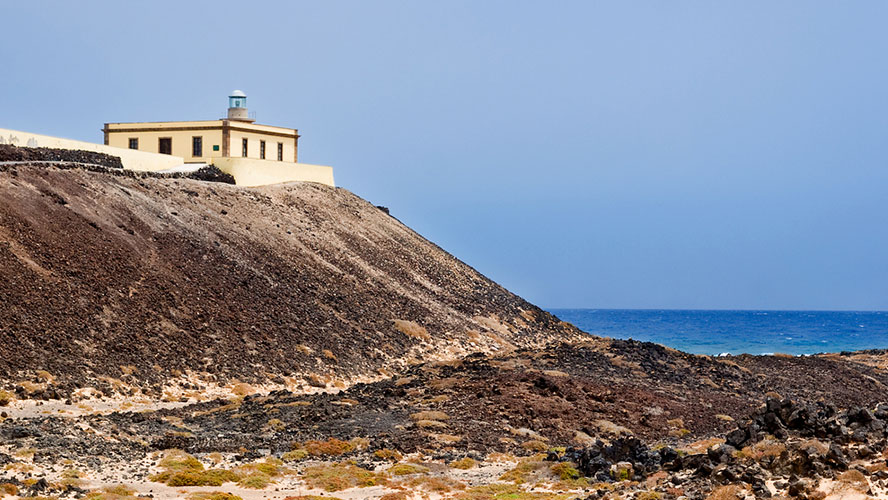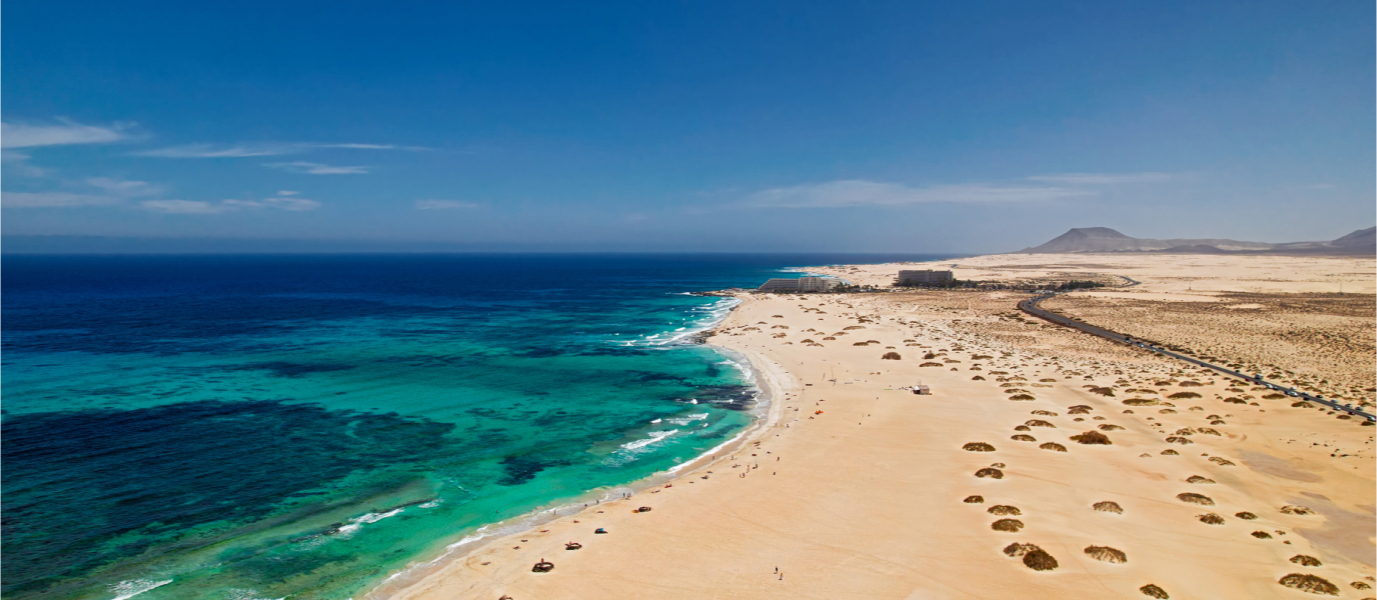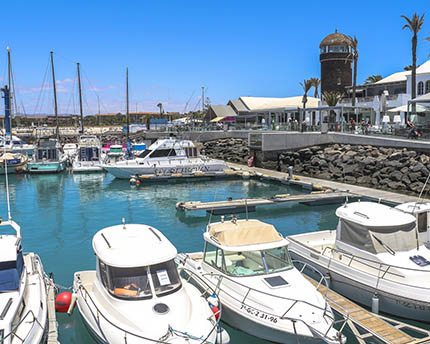Exploring the lighthouses of Fuerteventura is an original and romantic way to discover the geography of an island with 320 kilometres of coastline. The structures, which shine light onto coastal waters, have a special magnetism, be it for their habitual settings in remote and beautiful landscapes or for their stories of shipwrecks and the solitude of lighthouse keepers.
Perhaps, immersed as we are in the daily hustle and bustle, in the continuous bombardment of information, in the hurried comings and goings of people who are always late, heading off towards a remote lighthouse, or climbing up a secluded mountain, could be a great way for reconnecting with oneself, casting aside our worries and enjoying the rhythmic motion of the waves as they crash against the cliffs. If this is what you’re yearning for, then read on. In this article we’ll talk you through the best lighthouses in Fuerteventura, so let’s not hang about.
El Tostón lighthouse: a watchtower in the strait of La Bocaina
Built in the late nineteenth century in Punta Ballena in the north of Fuerteventura El Tostón’s current appearance is down to various subsequent alterations; hence it now has no more and no less than three towers, the most striking being the most slender tower, with its unmistakeable white and red stripes, which can be seen from afar. The lighthouse has become one of the most iconic images of the island of Fuerteventura and is a safe bet if you’re looking for a lovely sunset.
Together with the lighthouses of Punta Pechiguera, on the neighbouring island of Lanzarote, and Punta Martiño lighthouse on the Island of Lobos, it makes up the triangle of watchtowers guarding the strait of La Bocaina; that is, the passage of water that separates Fuerteventura from Lanzarote. The lighthouse is home to the Traditional Fishing Museum, where you can learn about the techniques employed by the people of Fuerteventura to catch fish in areas in which this was by no means easy. What’s more, in the vicinity of the lighthouse you’ll find a series of beautiful coves where you can enjoy a relaxed swim in crystal-clear waters.
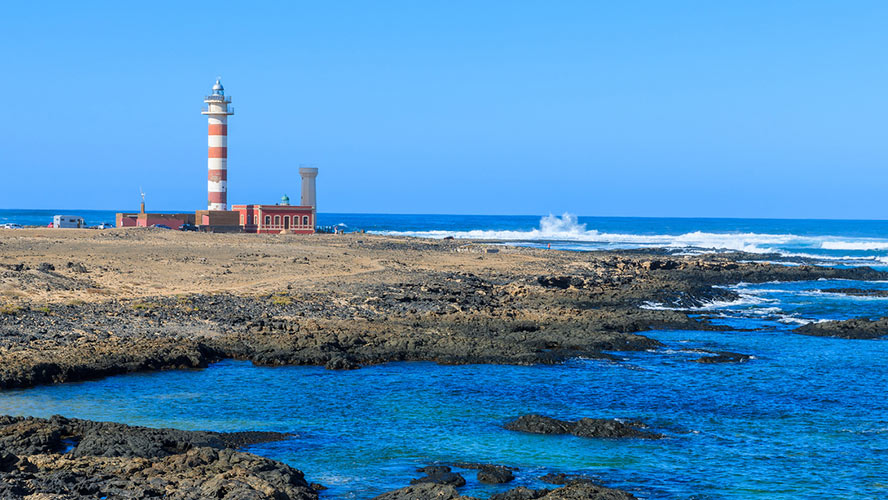
The Punta La Entallada aerobeacon
We continue our route this time on the eastern coast of Fuerteventura, heading towards the Punta La Entallada aerobeacon. This modern lighthouse is far removed from the image that we normally associate with these types of constructions, since it is U-shaped and composed of three sections made from lime and red pumice stone. The part that serves as the lighthouse is in the middle and has a height of under 12 metres.
However, its small stature doesn’t hinder its function, as the building stands on a clifftop, at an altitude of 200 metres, from where you can admire unique panoramic views of the Atlantic Ocean and Los Cuchillos de Vigán, spectacular rocky formations whose sharp features owe to wear caused by erosion. The Punta La Entallada lighthouse is situated in the part of the island closest to the African continent, with the Moroccan coast situated at only a distance of around 100 kilometres. What’s more, it boasts a very special feature, since it is actually an aerobeacon; in other words, it is used to guide airplanes.
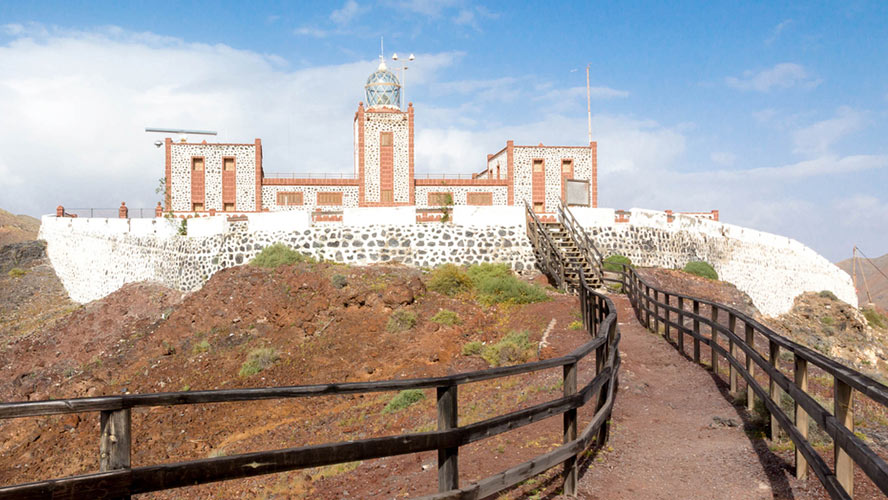
If you would like to visit the Punta La Entallada lighthouse, bear in mind that by car it can only be accessed from the village of Las Playitas via a very narrow road with lots of bends. That said, it will be more than worth it once you arrive and take in the incredible views.
Punta Jandía lighthouse: the watchman of the southern coast
This lighthouse, perched on the southernmost point of the island of Fuerteventura, is one of those places that invite you to lose yourself and connect with the essence of nature. Built in 1864, its great attraction is its location at the end of a strip of land in a very remote volcanic landscape in front of the Atlantic Ocean. The building houses the Jandía Natural Park visitors’ centre, where you can learn about the geological characteristics and the endemic flora and fauna of the Jandía Peninsula. It also explains the reasons as to why UNESCO declared Fuerteventura a Biosphere Reserve in 2009.
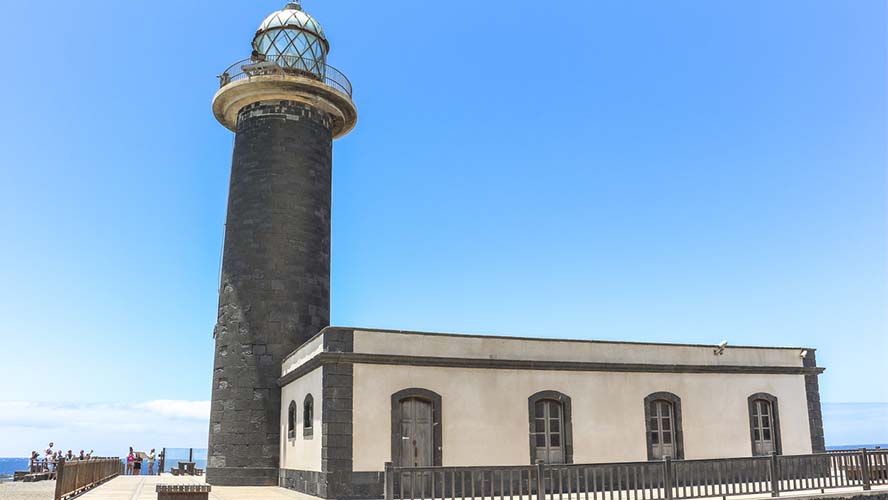
The lighthouse can be accessed by car in approximately 40 minutes (22 kilometres) from the town of Morro Jable, although we recommend doing the journey in a four-wheel drive. There’s also a 4×4 minibus service that runs between the village and El Puertito—a small group of houses close to the lighthouse where you can eat what is allegedly the best fish stew in Fuerteventura.
Morro Jable lighthouse, an impressive concrete tower
Still in the south of the island, Morro Jable lighthouse is easier to access, since it is located right on El Matorral beach, a strip of natural white sand spanning four kilometres in front of the town of Morro Jable in the municipality of Pájara. However, the fact that it is surrounded by the town and its modern aesthetics (it was built in 1996 from concrete) means it is lacking some of the charm and beauty of the aforementioned lighthouses.
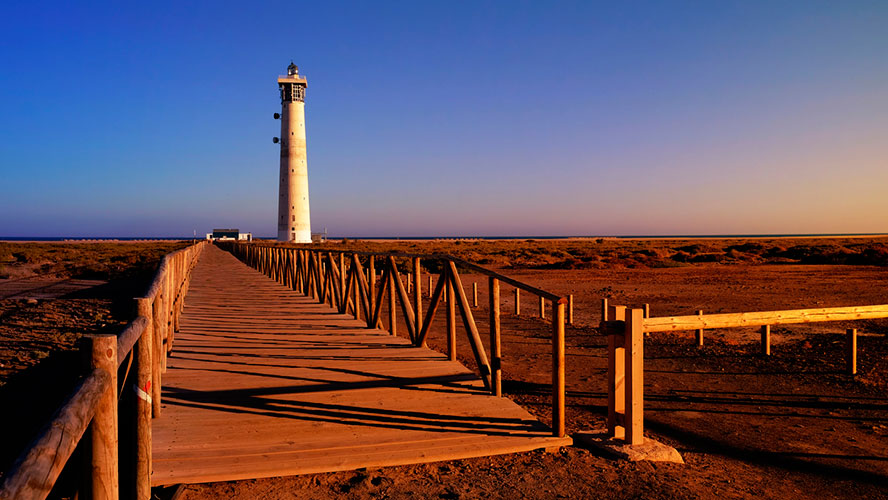
San Martiño lighthouse: between Fuerteventura and Lanzarote
Last but not least is this small lighthouse nestled in the north of the Island of Lobos, a secluded rocky islet little over two kilometres off the coast of Corralejo separated from Fuerteventura by a channel known as El Río or Paso de Orchilla. To get to the island you will need to take a ferry and, once there, either one of two designated paths will take you to the lighthouse. The most logical option is to take one path there and the other path on the way back, as they are more or less identical in terms of distance and that way you can enjoy both trails (one goes along the coast and the other crosses the island through the interior). Without a doubt, the landscape of the Island of Lobos is a perfect way to round off this journey through the best lighthouses in Fuerteventura.
